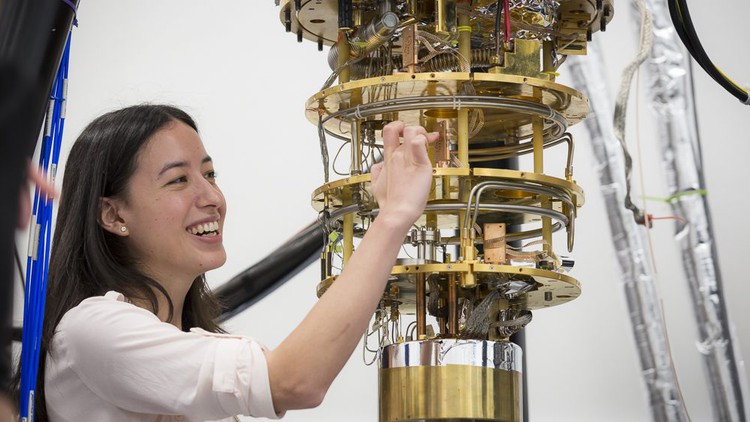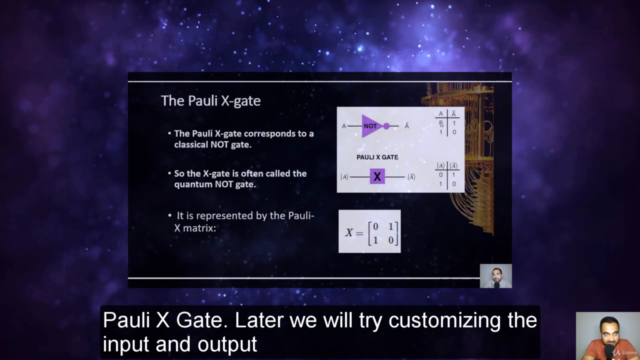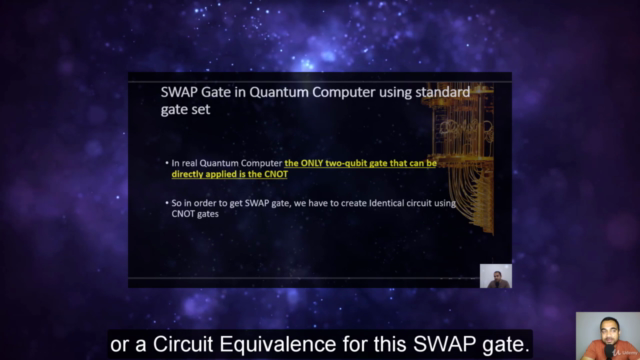Beginners guide: Practical Quantum Computing with IBM Qiskit

Why take this course?
Based on the comprehensive outline you've provided, here's a structured approach to teaching quantum computing using Python with Qiskit and IBM Quantum Experience:
Introduction to Quantum Computing
-
Overview of Classical vs Quantum Computing
- Explain the limitations of classical computers for certain problems.
- Introduce quantum bits (qubits) and superposition.
- Discuss entanglement and its significance in quantum computing.
-
Quantum Hardware and Software
- Present an overview of available quantum processors from IBM Quantum Experience.
- Briefly introduce Qiskit as a software development framework for building quantum programs.
Setting Up the Development Environment
-
Installation of Anaconda and Jupyter Notebook
- Guide students through setting up Python, Anaconda, and Jupyter Notebook.
- Explain how to use Jupyter Notebook for interactive programming in quantum computing.
-
Introduction to Qiskit
- Install Qiskit via pip or conda.
- Explore the Qiskit environment and its components (Quantum Circuit, Aer, etc.).
Quantum Gates and Operations
-
Basic Quantum Gates
- Define one- and two-qubit gates (Hadamard, X, Z, CNOT, etc.).
- Discuss the importance of gate operations in quantum algorithms.
-
Quantum Gate Operations
- Perform basic quantum gate operations using Qiskit.
- Visualize gate operations and their effects on qubits.
-
Measuring Quantum States
- Explain the concept of measurement and its impact on qubit states.
- Implement measurements in Qiskqit.
Quantum Algorithms
-
Deutsch-Jozsa Algorithm
- Describe the problem and the algorithm's solution.
- Implement the Deutsch-Jozsa algorithm using Qiskit.
-
Quantum Fourier Transform (QFT)
- Explain the role of QFT in phase estimation and phase-amplitude amplification.
- Implement QFT using Qiskit.
-
Shor's Algorithm
- Describe the problem of prime factorization and Shor's solution.
- Implement Shor's algorithm using Qiskit.
Advanced Topics
-
Quantum Error Correction
- Introduce the concept of error correction in quantum computing.
- Explore the role of stabilizers and syndrome extraction.
-
Quantum Key Distribution (QKD)
- Discuss the principles behind QKD and its importance in secure communication.
- Review the BB84 protocol and other QKD techniques.
-
Quantum Teleportation
- Explain the process of quantum teleportation.
- Implement a basic model of quantum teleportation using Qiskit.
Applications and Future Directions
-
Machine Learning with Quantum Computing
- Discuss potential applications in machine learning.
- Review current research and future prospects for hybrid algorithms.
-
Material Science and Drug Discovery
- Explore how quantum computing can accelerate discovery in these fields.
- Provide examples of existing quantum simulations.
-
Quantum Computing's Impact on Various Industries
- Speculate on the potential impact of quantum computing on finance, optimization problems, and cryptography.
Final Project and Course Wrap-up
-
Capstone Project
- Guide students through designing and implementing their own quantum algorithm or solving a problem using Qiskit.
-
Review and Further Learning
- Summarize key takeaways from the course.
- Provide resources for further learning, including books, online courses, and research papers.
-
Course Completion and Next Steps
- Offer guidance on how to continue exploring quantum computing.
- Issue certificates of completion to students.
Throughout the course, ensure that students have hands-on experience with Qiskit by providing them with jupyter notebooks containing step-by-step tutorials and exercises. Encourage exploration and experimentation to deepen their understanding of quantum computing principles. Remember to credit all references and maintain a pace that allows students to grasp complex concepts without feeling overwhelmed.
Course Gallery




Loading charts...